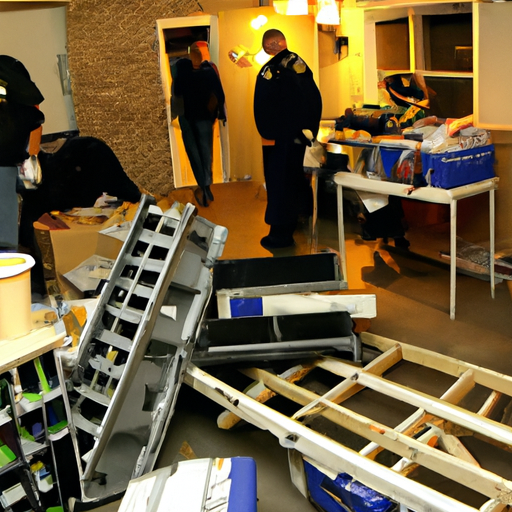Combatting the Opioid Crisis: A Closer Look at Toronto Police’s Targeted Raids
As part of a broader discussion of an issue that is affecting all communities within Canada, this blog post will focus on the ongoing opioid crisis that has ravaged the country, with special focus on the Greater Toronto Area (GTA) as described in a recent article from CP24.
The opioid crisis is a national health crisis that has impacted countless families and individuals, leading to escalating crime rates, an increase in homelessness, and more recently, the initiation of an opioid class action suit against a major pharmaceutical company.
The Ongoing Battle against the Opioid Crisis in Canada’s Largest Metropolis
In the Greater Toronto Area, the nexus of Canada’s opioid crisis, law enforcement agencies have been engaging in targeted operations to disrupt the flow of illegal opioids into communities. A recent series of coordinated police raids led to the arrest of four people, and the seizure of drugs, weapons, and ammunition. This aggressive form of law enforcement is a calculated response to an escalating issue that has proven difficult to manage.
The Implications of These Raids
Law enforcement’s aggressive approach underscores the severity and magnitude of the opioid crisis in the GTA and by extension, the rest of Canada. The seizure of massive amounts of drugs and weapons emphasizes the sheer breadth of the issue, and serves as a reality check as to how intertwined substance abuse, criminal activity, and community safety have become. Outside of its immediate impact, these drug raids also underscore the pressing need for further collaboration and strategies to combat this crisis effectively.
Efforts against the Crisis and the Role of Naloxone
In addition to law enforcement’s attentiveness, several other strategies are being employed in the fight against the opioid crisis. Key among these is the widespread distribution of naloxone kits – a medication designed to quickly reverse an opioid overdose. Making this lifesaving medication readily available has helped enable residents of the GTA (and Canada at large) to administer emergency assistance, potentially saving countless lives. It’s a strategy that acknowledges the rampant opioid abuse and seeks to curb its most destructive outcome – overdose deaths.
Key Points:
- The opioid crisis has led to an increase in crime and homelessness.
- A recent series of coordinated police raids in the GTA resulted in the arrest of four individuals and the confiscation of substantial amounts of drugs and weapons.
- The Canadian government has initiated an opioid class action suit against a major pharmaceutical company.
- The distribution of naloxone kits is part of a broader strategy in response to the crisis.
- The opioid crisis requires ongoing collaborative efforts between law enforcement, healthcare professionals, and communities.
A Call to Action
While it’s apparent that appreciable efforts are being made to combat this crisis, the resilience of Canada’s opioid problem underscores the need for more comprehensive and collaborative strategies. The ripple effects of the opioid crisis extend beyond those directly affected; they are impacting communities, healthcare systems and the socio-economic dynamics of cities and towns alike.
Going forwards the responsibility lies on not just law enforcement or medical professionals, but community leaders, educators, and everyday citizens to reinforce understanding, compassion, and proactive prevention campaigns to stem this crisis.
Conclusion: The Essential Takeaways
In conclusion, the opioid crisis in Canada is a multifaceted issue that demands a multi-pronged approach. The recent law enforcement raids in the GTA are just one aspect of the broader ongoing enforcement efforts. However, it is clear that the national approach also must include essential health initiatives like the widespread distribution of naloxone. As we continue to wrestle with this crisis, the healthcare system, law enforcement agencies, and communities must ensure they are maximizing collaboration and adopting innovative solutions.
